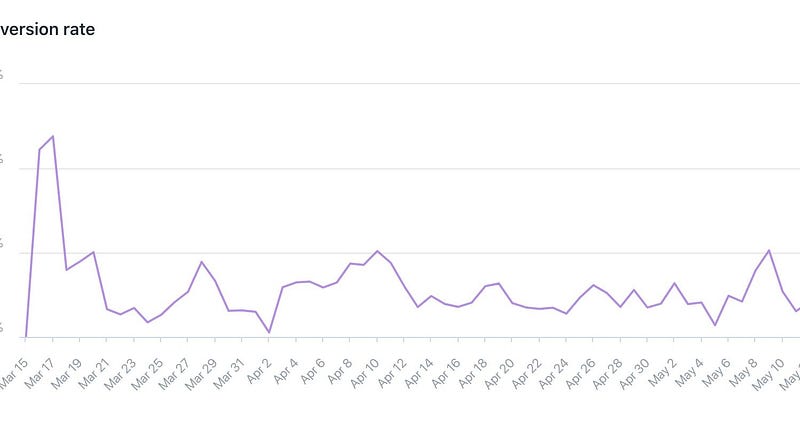Conversions, Marketing & Partnerships
Annie Lundgren
One thing that’s been on my mind as we transition Phoenix, Oregon to digital and learn from Theatrical-at-Home is the customer sales cycle.
As we contemplate the effectiveness of ads, we are evaluating conversion rates, comparing them to other industries, and trying to decide what makes an ad work or not work for independent film.
A huge factor in our sales during our COVID response was our partnership with theaters, festivals and restaurants.
I ran a report on store conversion rates for visibility into customer behavior.
What we find is that during events or high-trust engagement with known customers, conversion rates are extremely high — over 10%. Standard conversion rates for most industries are 2–5% and more realistically 1–3%.
Our three big events were 1) release March 20, 2) Film Festival Day April 11, and 3) Takeout & A Movie May 9.
On these dates the conversion rates were 23.8%, 10.2% and 10.3% respectively. Our average conversion rate between March 15 — May 15 was just over 5.26%.
This shows that during events customers accessed our website with an intention to buy. During the rest of the time, they accessed the site out of curiosity based on an article, word of mouth, or publicity. When we had the least press or direct, high-trust customer outreach, conversion rates dropped to 1–2%.
I fully expect that our conversion rates going forward without partners or direct outreach will be in that 1–3% range. This most likely will be true for ads as well.
These are key learnings for independent filmmakers and is something that we are rarely taught, but it has always been right in front of our noses. At festivals we have huge crowds — and many of those audiences love our films. In those moments, we are accessing pre-built audiences and leveraged partner marketing, but we too often expect that momentum to continue into the broader marketplace.
What we’ve been able to tap into with our streaming platform and real-time sales & commission transparency is a leveraged partner & marketing program.
Often filmmakers feel a bit like victims — like we do the work but then others make the money. As a result, our tendency might be to scoff at sharing revenue once it’s our turn to sell online. But in splitting revenues with our partners, we were able to value their access to audiences and compensate them for marketing the film. On the other hand, we also made money, and our partners felt joy in helping indie filmmakers.
One positive thing coming out of this pressure-cooker that has been COVID is a new discussion around the symbiotic relationship between artists, curators and audiences and how we can all best share and leverage our resources and talents to help and nurture each other — and most importantly help each survive!
♡ Annie
